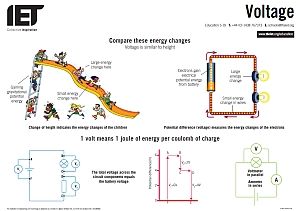Voltage Difference

Use the household voltages widget below to find out the household voltage values for various countries e g united states canada japan china south africa etc.
Voltage difference. Current cannot flow without voltage. Voltage is the work to be done upon an unit charge to move between two points against a static electric field. In order to deliver full power to the load the ac voltage and current needs to be synchronized or in phase. The voltage or potential difference from point a to point b is the amount of energy in joules as a result of electric field required to move 1 coulomb of positive charge from point a to point b.
Voltage also called electromotive force is the potential difference in charge between two points in an electrical field. Resistance is a material s tendency to resist the flow of charge current. This reduced voltage is known as potential difference which depends on the connected load while the emf electromotive force is the unloaded voltage of the battery or power supply. Voltage also called electromotive force is a quantitative expression of the potential difference in charge between two points in an electrical field.
In other words voltage is the energy per unit charge. A or amps or amperage. Voltage electric potential difference electric pressure or electric tension is the difference in electric potential between two points which in a static electric field is defined as the work needed per unit of charge to move a test charge between the two points. Potential difference and voltage are two terms used in engineering to describe a difference of the potential in two points.
So when we talk about these values we re really describing the movement of charge and thus the behavior of electrons. The phase difference is the difference with respect to the time shift between the two ac waves. This causes power loss in the circuit. The potential difference is always less than the emf and the emf is the maximum voltage the battery can supply.
Which says voltage is the difference in electric potential energy per unit charge between two points. However if only the electric field is concerned potential difference is same as the voltage. Current is the effect voltage being the cause. The electrical potential difference across the two inserts of a household electrical outlet varies with the country.
V or volts or voltage. Current is the rate at which charge is flowing. In such cases the magnitude of one wave lags behind the magnitude of the other wave. A negative voltage between points a and b is one in which 1 coulomb of energy is required to move a negative charge from point a to b.
In the international system of units the derived unit for voltage potential difference is named volt. Voltage is referred to electricity where potential difference can be related to electrical magnetic and gravitational fields.


















